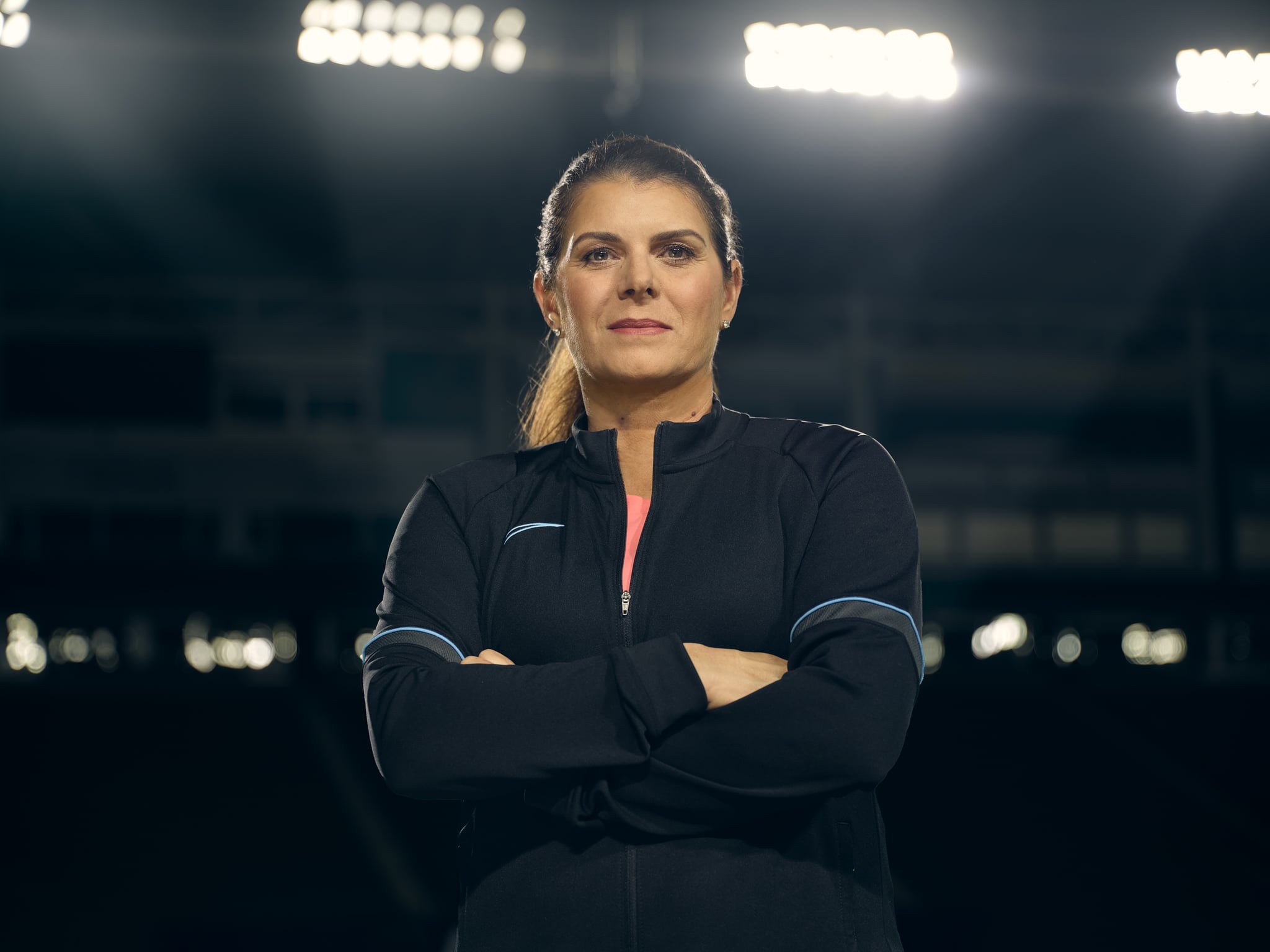Products You May Like

Mia Hamm is an athlete to her core. While the two-time Olympic gold medalist retired from soccer in 2004, it’s clear that she still takes any athletic competition very seriously.
As the two of us sit beside each other in a hotel suite overlooking Central Park, she tells me about a recent loss at what was supposed to be a friendly game of pickleball. Hamm says the shocking L took place during a game at a recent birthday party among her former teammates and their national team trainer.
“She brought all her friends who were in their late 60s and early 70s, and they whooped us,” Hamm tells POPSUGAR.
“The thing about pickleball is you need to be athletic, but you can totally get smoked with someone with just better technique and that is so frustrating,” she explains. “I swear we lost every game.”
Hamm isn’t used to losing. The hall-of-famer has won two FIFA world cups, four NCAA championships, and she held the most career goals of any person (regardless of gender) in international soccer play when she retired in 2004. Admittedly, she misses the grind, which she says is integral to being a successful athlete. As she puts it, “You gotta love that. You gotta love the blisters and the sweat. Those are the things that I miss the most — being pushed to that extent of trying to be as good as you can be.”
“I remember he just kept telling me how proud he was of me.”
Hamm started grinding her way to the top at an early age, following in the footsteps of her brother, Garrett, who was adopted into the family at age 8 — Hamm was three years younger. He grew up to be a stellar athlete, able to switch effortlessly between point guard in basketball, quarterback in football, and playmaker in soccer. “Whatever he did, I responded to,” Hamm says — and that included excelling in sports. Growing up, she and Garrett were pros at sandbagging his friends during pickup games.
“They would always giggle, ‘Oh, you’re picking a girl on your team’ and [Garrett] would be like, ‘Yeah, whatever,’ and then we’d end up scoring the first touchdown. They couldn’t even keep up,” Hamm recalls. The two were tickled as they left his friends in awe of Hamm’s athleticism. “We’d just laugh, ’cause he knew I was fast, he knew I could catch, and he had a great arm. It was too easy sometimes,” she says.
It was actually Garrett who inspired her to play soccer in the first place. “So much of our relationship was through sport,” Hamm says. Unfortunately, Garrett was forced to quit playing all contact sports at age 18 after being diagnosed with a rare disease called aplastic anemia, a “blood condition that occurs when your bone marrow cannot make enough new blood cells for your body to work normally,” according to the National Heart, Lung, and Blood Institute. But he still found joy in supporting his sister. In some ways, Hamm says, Garrett was able to “live through” her accomplishments. The Angel City FC investor recalls their last “prominent memory” together celebrating her 1996 Olympics win, just months before Garrett died.
“It was the last major tournament that we were able to share together,” Hamm says. After winning the game, Hamm planned to meet Garrett back at Nike’s family houses for the athletes, but she was randomly selected for drug testing. “I showed up very late and my brother was there waiting for me,” she recalls. “I remember he just kept telling me how proud he was of me.”
Garrett died eight months later from complications from a bone marrow transplant (BMT). Since then, Hamm has done everything in her power to create more visibility around bone marrow transplants and potential complications like Graft-Versus-Host Disease (GVHD). In 1999, she created the Mia Hamm Foundation, which works to raise funds and awareness for bone marrow/cord blood transplants, as well as increase the opportunities for young women in sports. And recently, Hamm decided to partner with Incyte, a biopharmacetical company to direct people toward resources like GVHDnow.com, which aim to provide educational tools for patients to help them understand easily-overlooked GVHD symptoms, like abdominal pain or cramps, nausea, and skin rashes.
“If you see something even slightly off after a transplant, go talk to your doctors,” Hamm says, emphasizing that no symptom is too small. “Sometimes you are your best advocate.”
In her personal advocacy work with the BMT community, Hamm has been able to not only register countless prospective matches, but she’s also found at least 10 donors through her events. “It’s the needle in the haystack,” she tells POPSUGAR. But she’s determined to find more, bringing along that same sense of fight and conviction that made her such a formidable opponent, champion, and athlete.
Image Source: Justin Bettman Courtesy of Incyte
